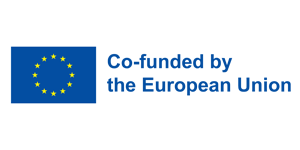Christl Baur (DE), Vanessa Hannesschläger (EU)
Over the last decades, we have embraced a new technology that dissolved the binary of virtual and real to merge and blend physical and digital spaces. In the general public perception, “Extended Reality” (XR) technologies, which most prominently manifest in the forms of Virtual Reality (VR) and Augmented Reality (AR), allow us to access the “Metaverse” and are predominantly employed by the gaming and entertainment industries: with companies like Apple and Meta investing substantially in the development of the technology and high culture venues like Salzburg Festival or Bayreuth Festival employing it, XR has become a substantial economic factor.

JKU MED CAMPUS (MED Campus I)
WED Sept. 4 – SUN Sept. 8, 2024
Free Admission
Despite these developments, many people have yet to make their first contact with the technology and take their first virtual steps into the Metaverse. Meanwhile, many fields, disciplines and industries are already integrating XR technologies into applied contexts. In medicine, virtual spaces are employed not only to teach skills like operations and to visualize anatomies, but also for treating patients with mental health conditions or degenerative mental diseases like dementia. Pilots are trained to fly virtual skies before boarding their first physical cockpits, soldiers learn to fight on virtual battlefields, influencers and models present digital fashion at Metaverse design weeks, architects design virtual homes before building them and their customers furnish the brand new virtual homes before going shopping for the perfect dining table, digital prototypes speed along the highways of the Metaverse before they turn into real world cars—to name just a few examples of XR applications. In the cultural and heritage sector, ancient cities, endangered environments and destroyed historical landmarks (like the Notre Dame cathedral) are rebuilt in the Metaverse.
Like all big technological developments and digital evolutions, XR brings up questions of Open Source development, inclusivity and sustainability. How do we make sure to keep key technology a publicly available good? How do we make sure that all, including the economically disadvantaged and impaired, have equal access to the digital and virtual spaces of our society? How do we design technologies in ways that minimize the impact on our endangered physical surroundings and support its preservation? Art also allows us to explore the nature of simulation and delves into the question of how we re-construct and re-conceptualize ourselves as society in simulated reality. What is the role of the individual, the role of the group in virtual reality? Do the borders between the self and the non-self become more fluid in simulated spaces, and what impact does that have on the nature of collaborative processes?
Europe is invested in an approach to XR that takes these key issues into account. The project Realities in Transition, which is co-funded by the Creative Europe programme of the European Union and gives the context for this exhibition, focuses on artistic XR that explores not only the intellectual investigation of XR as a medium of expression and creation, but also the technical dimensions of developing XR technology in sustainable, open and inclusive ways. The projects we showcase in this exhibition are prime examples of such approaches, covering a variety of fields such as environmental preservation and documentation, architectural and archival applications, reflections on social justice as well as immersive artworks and performances. They demonstrate that artists are today, as they have been from the beginnings of this technological development, the key players in developing our imaginaries within and about the Metaverse.
-
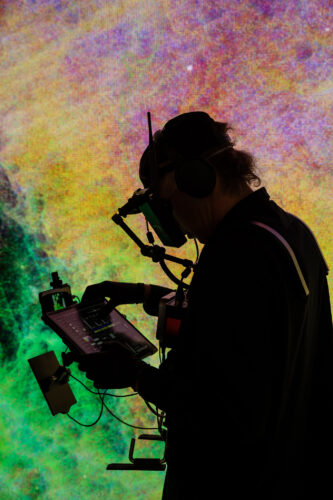
#ALPHALOOP
Adelin Schweitzer (FR)
#ALPHALOOP is an innovative performance exploring the intersection of nature and technology through techno-shamanism. With a mix of 360° cinema and live performance, it immerses up to 6 participants in a unique experience that blends reality with digital perceptions, guided by two antagonists, HIM and the MÉTA.
-
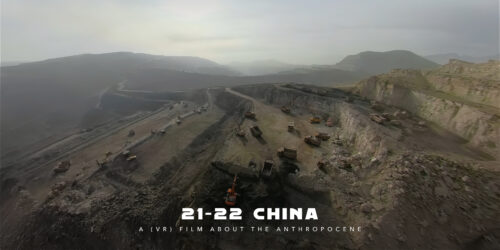
21-22 CHINA
Thierry Loa (CA)
An immersive VR journey from above across China at the dawn of the Anthropocene.
-
21-22 USA
Thierry Loa (CA)
An immersive VR journey from above across the United States of America at the dawn of the Anthropocene.
-

Alison’s Room
Paula Maya Strunden (DE/FR)
xR artist Paula Strunden has recreated British architect and author Alison Smithson’s original workspace in order to experiment with new narratives, combining an immersive experience with historical design analysis. Special tools, buttons and a talking cat help to guide visitors through the story. As they move through Alison’s Room and interact with the objects on…
-
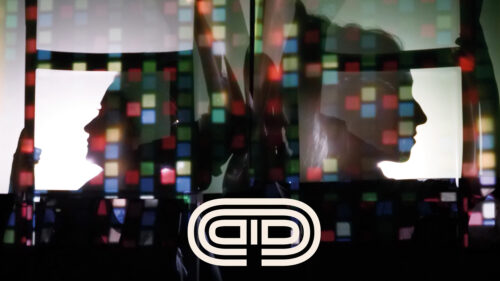
Department of Interfaced Dimensions
Annika Boll (DE), Eirini Lampiri (GR), Gökay Atabek (TR), Lam Lai (HK), Merve Sahin (TR), Mihai Gui (RO), Silvana Callegari (CO)
You are invited to step into a world of play, interactivity and uncertainty. Observe, follow or collaborate with your fellow participants to navigate your way through alternative realities. Interchange roles and actively engage in a play of surveillance and manipulation.
-
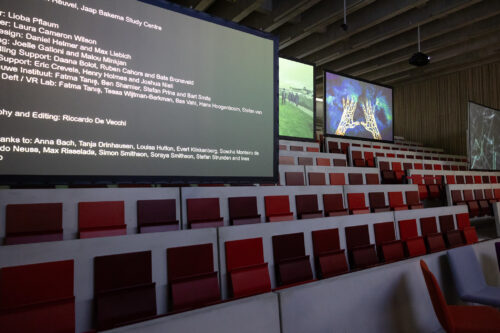
Erwartung
Staatstheater Augsburg (DE)
Arnold Schönberg’s mono-opera Erwartung, which saw its world premiere in 1924, uses expressive tonal language to tell the story of a woman’s anguish when she discovers a corpse in the woods at night while searching for her lover. Artistic Director André Bücker transfers this emotional study of the human psyche into a rendered 360° VR…
-
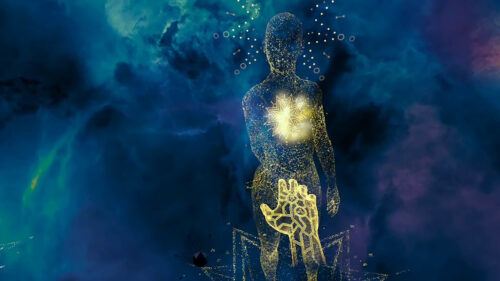
FIGHT BACK
Céline Tricart (FR/US), Maëlle Holtzer (FR), Julie Roué (FR)
Under the cover of a fun adventure experience, FIGHT BACK is an introduction to self defense techniques as an answer to gender-based violence. Inspired by Empowerment Self Defense, it utilizes the unmatched potential of VR and hand tracking to facilitate learning, building muscle memory, mental acuity, and instilling confidence.
-
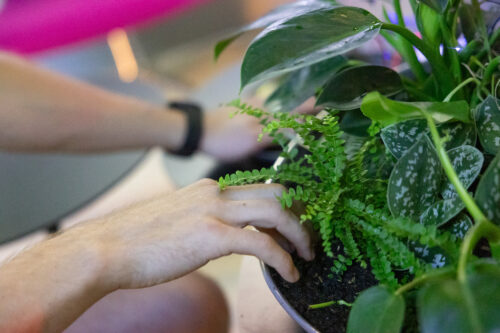
FOHRAMOOS
Stefan Kainbacher (AT), Robert Lang (AT), Isabel Jäger-Nemec (AT) Stefhani De Albuquerque Besnyi (BR), Niklas Kübler (AT), Benedikt Hermle (DE), Daniel Malin (AT)
This realtime VR installation is based on point clouds from 3D scans of the Austrian high moor. Immerse yourself with spatial audio and interact with your surroundings, gaining an appreciation for this essential ecosystem, vital in the fight against climate change.
This exhibition is presented in the context of the Realities in Transition project. Realities in Transition is co-funded by the Creative Europe Programme of the European Union.


